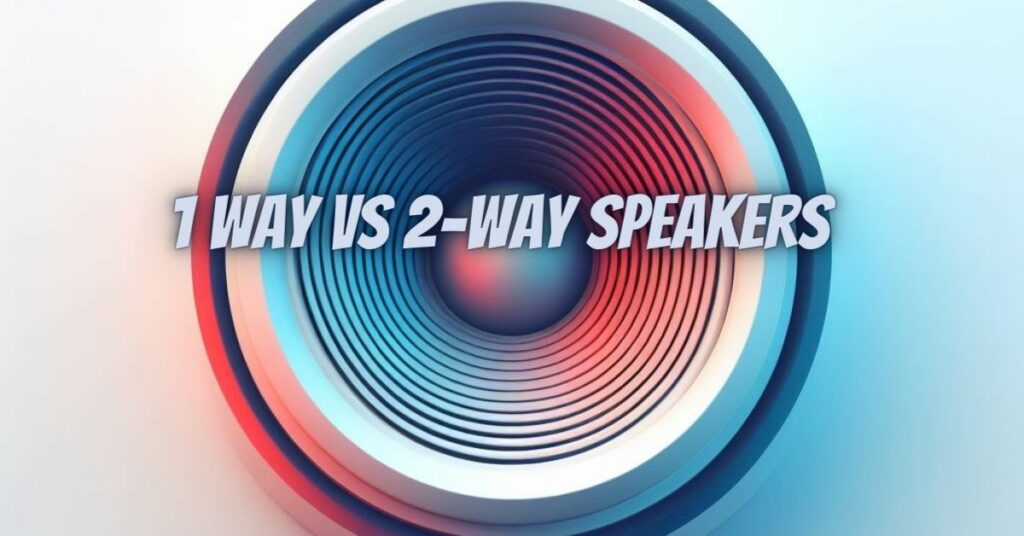The choice between 1-way and 2-way speakers is a common dilemma for those looking to upgrade their audio systems or choose the right speakers for their needs. In this article, we’ll explore the fundamental differences between 1-way and 2-way speaker configurations, helping you make an informed decision when it comes to your audio setup.
Understanding Speaker Configurations
Before we dive into the comparison, let’s first clarify what 1-way and 2-way speakers are:
1-Way Speakers:
- Also known as single-driver speakers, 1-way speakers consist of a single full-range driver responsible for reproducing the entire audible frequency spectrum.
- They are simple in design, typically compact, and easy to install.
- 1-way speakers are commonly found in small audio systems, portable speakers, and applications where simplicity and compactness are key.
2-Way Speakers:
- 2-way speakers incorporate two primary components: a woofer and a tweeter.
- The woofer handles low-frequency sounds (bass), while the tweeter manages high-frequency sounds (treble).
- They are widely used in various audio setups, including home theater systems, car audio, and studio monitors, due to their ability to provide a more balanced sound across the frequency spectrum.
Key Differences Between 1-Way and 2-Way Speakers
Now, let’s delve into the primary differences between 1-way and 2-way speaker configurations:
- Frequency Range:
- The most significant difference lies in the frequency range each type of speaker can reproduce.
- 1-way speakers are limited to a single driver, which means they have a limited frequency response and may not provide the same level of detail and clarity across the entire spectrum.
- 2-way speakers, on the other hand, are designed to cover a broader range of frequencies due to the dedicated woofer and tweeter. This results in more balanced and detailed sound reproduction.
- Sound Quality:
- 2-way speakers generally offer better sound quality because they can distribute the workload of reproducing different frequencies between the woofer and tweeter.
- This separation of duties leads to reduced distortion, improved clarity, and a more dynamic sound experience, making 2-way speakers a preferred choice for audiophiles and critical listening.
- Versatility:
- While 1-way speakers are suitable for specific applications where simplicity and compactness are essential, 2-way speakers are more versatile and can handle a wider range of audio sources and genres.
- 2-way speakers are commonly used in home audio systems, car audio, and professional audio setups.
- Size and Form Factor:
- 1-way speakers are often smaller and more compact, making them a suitable choice for portable devices, such as Bluetooth speakers and small radios.
- 2-way speakers may be larger due to the additional components (woofer and tweeter), which can limit their use in space-constrained environments.
In the choice between 1-way and 2-way speakers, your decision should be driven by your specific audio needs and preferences.
- If you require a simple and compact audio solution for basic listening needs, 1-way speakers may suffice.
- However, if you seek higher sound quality, better frequency response, and a more versatile speaker configuration, 2-way speakers are generally the superior choice.
Ultimately, the decision will depend on factors such as your intended use, room size, budget, and the importance you place on audio quality. Carefully assessing your needs and understanding the differences between these speaker configurations will help you select the best option for your audio setup, ensuring an enjoyable and satisfying listening experience.


